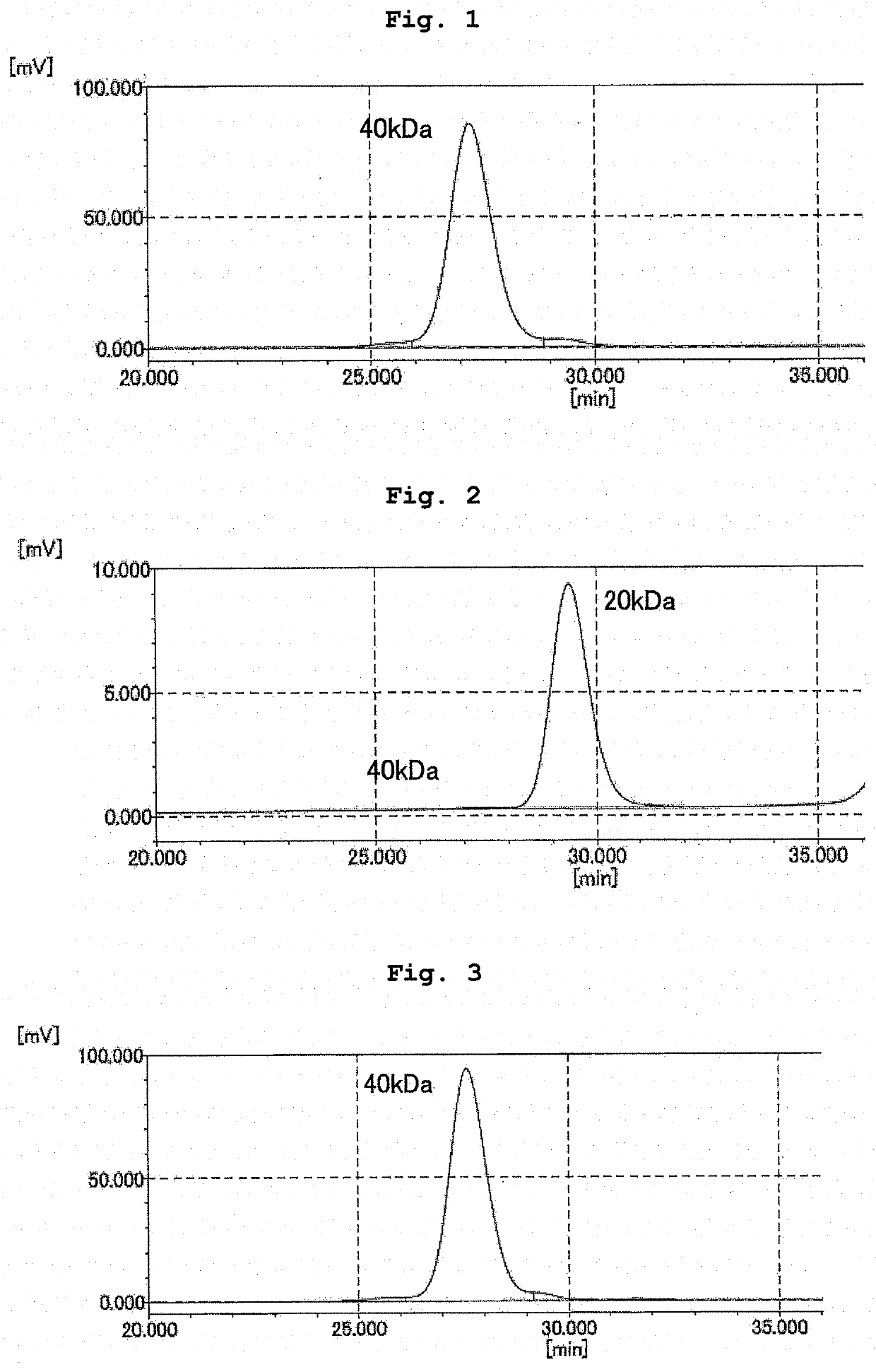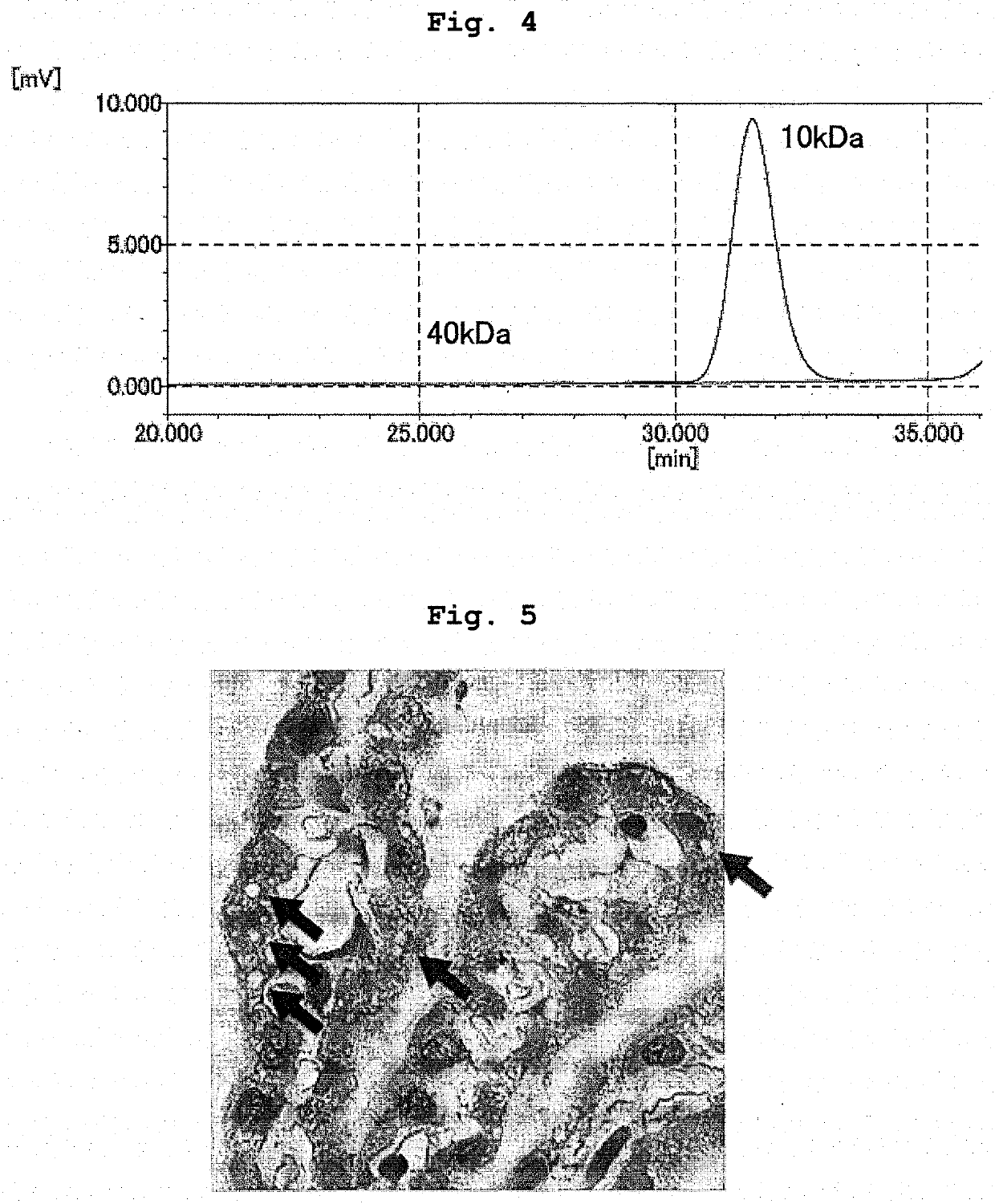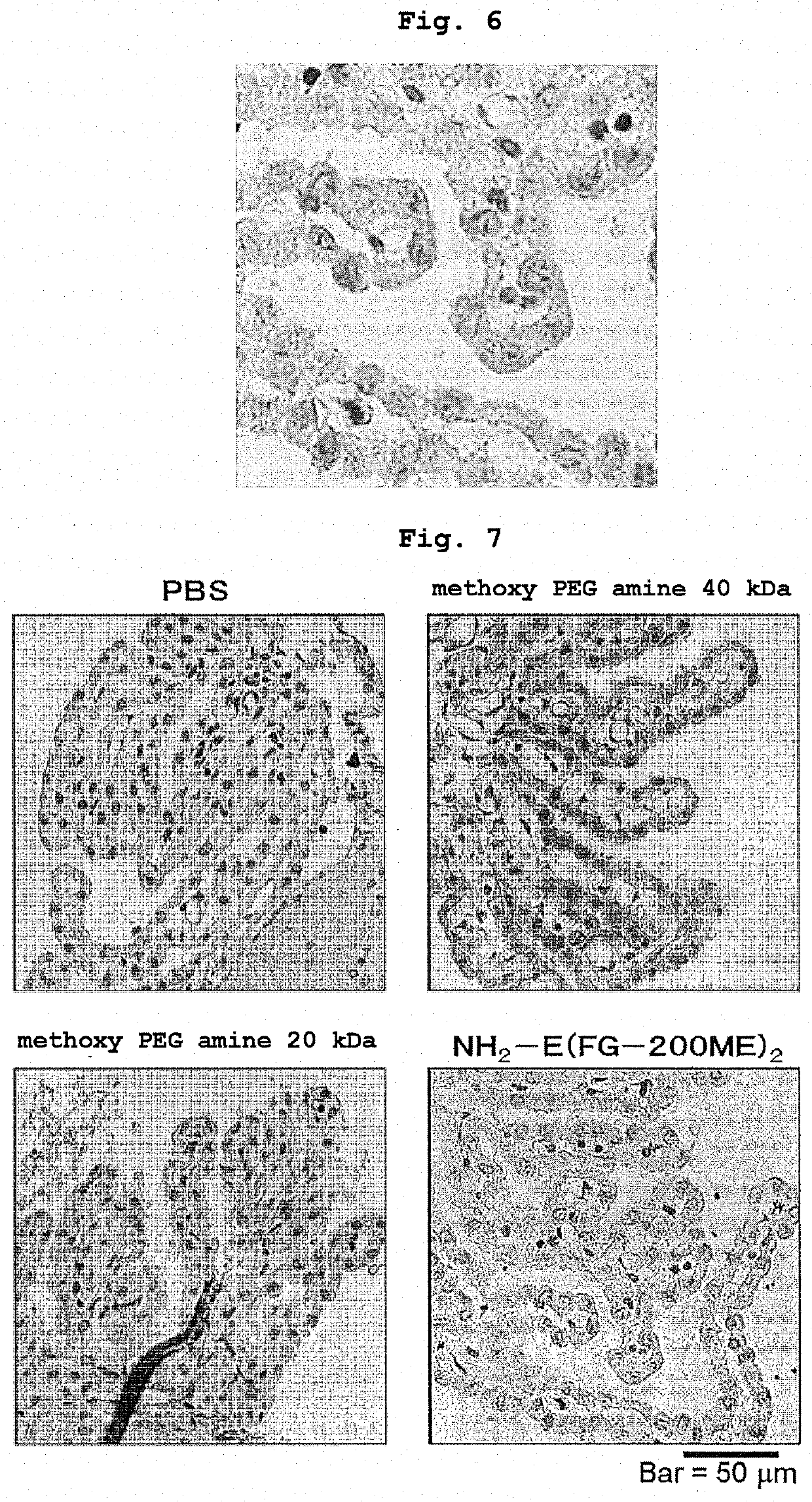Branched and degradable polyethylene glycol derivative
a polyethylene glycol and derivative technology, applied in the field ofbranched and degradable polyethylene glycol derivatives, can solve the problems of short half-life in blood, insufficient improvement of half-life of bio-related substances, and difficulty in obtaining a sufficient pharmacological effect, etc., to achieve the effect of suppressing the generation of vacuoles in cells, high molecular weight, and increasing the molecular weight of polyethylene glycol
- Summary
- Abstract
- Description
- Claims
- Application Information
AI Technical Summary
Benefits of technology
Problems solved by technology
Method used
Image
Examples
example 1
Synthesis of Compound (p3) (NH2-E(FG-200ME)2)
[0141]
example 1-1
[0142]
[0143]To L-phenylalanyl-glycine with the N terminal protected by a 9-fluorenylmethyloxycarbonyl group (Fmoc group) (Fmoc-Phe-Gly) (0.267 g, 6.0×10−4 mol, manufactured by WATANABE CHEMICAL INDUSTRIES, LTD.) and methoxy PEG having a propylamino group at the terminal (6.0 g, 2.8×10−4 mol, number average molecular weight=21,120, “SUNBRIGHT MEPA-20T” manufactured by NOF CORPORATION) was added dehydrated N,N′-dimethylformamide (60 g), and the mixture was dissolved by heating at 30° C. Thereafter, diisopropylethylamine (192 μL, 1.2×10−3 mol, manufactured by KANTO CHEMICAL CO., INC.) and (1-cyano-2-ethoxy-2-oxoethylideneaminooxy)dimethylamino-morpholino-carbenium hexafluorophosphate (COMU) (0.321 g, 7.5×10−4 mol, manufactured by Sigma-Aldrich Ltd.) were added, and the mixture was reacted at room temperature under a nitrogen atmosphere for 1 hr. After completion of the reaction, the mixture was diluted with chloroform (600 g), saturated aqueous sodium hydrogen carbonate solution (240 g...
example 1-2
[0145]
[0146]To ME-200GF-Fmoc (4.9 g, 2.3×10−4 mol) obtained in Example 1-1 was added N,N′-dimethylformamide (29.4 g), and the mixture was dissolved by heating at 30° C. Piperidine (1.55 g, 1.8×10−2 mol, manufactured by Wako Pure Chemical Industries, Ltd.) was added, and the mixture was reacted at room temperature under a nitrogen atmosphere for 2 hr. After completion of the reaction, ethyl acetate (300 g) was added and the mixture was stirred to uniformity. Hexane (150 g) was added, and the mixture was stirred at room temperature for 15 min. The resultant product was precipitated and suction filtered using 5A filter paper. The precipitate was recovered, dissolved again in ethyl acetate (300 g), hexane (150 g) was added, and the mixture was stirred at room temperature for 15 min. The resultant product was precipitated and suction filtered using 5A filter paper. The precipitate was recovered, washed with hexane (150 g), suction filtered using 5A filter paper, and dried in vacuo to giv...
PUM
| Property | Measurement | Unit |
|---|---|---|
| concentration | aaaaa | aaaaa |
| concentration | aaaaa | aaaaa |
| concentration | aaaaa | aaaaa |
Abstract
Description
Claims
Application Information
 Login to View More
Login to View More - R&D
- Intellectual Property
- Life Sciences
- Materials
- Tech Scout
- Unparalleled Data Quality
- Higher Quality Content
- 60% Fewer Hallucinations
Browse by: Latest US Patents, China's latest patents, Technical Efficacy Thesaurus, Application Domain, Technology Topic, Popular Technical Reports.
© 2025 PatSnap. All rights reserved.Legal|Privacy policy|Modern Slavery Act Transparency Statement|Sitemap|About US| Contact US: help@patsnap.com



